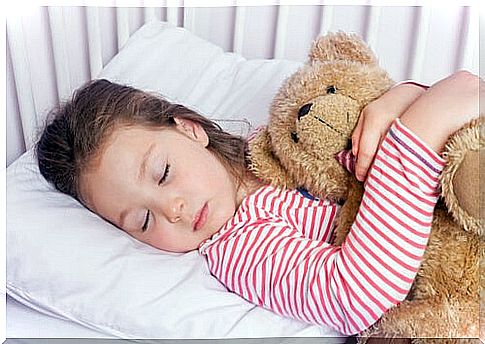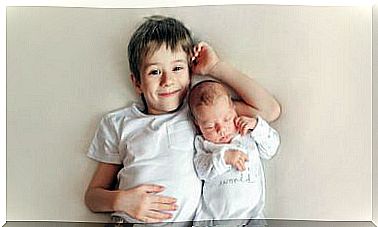The 4-7-8 Technique That Will Put Your Child To Sleep In A Minute

The 4-7-8 technique is to apply a numerical formula that allows the child to relax the body more quickly and improve diaphragmatic breathing. Its aim is to better breathe in the air, relax the muscles and calm the child’s mind.
The 4-7-8 technique, conducted by Andrew Weil, director of Integral Medicine and professor at the University of Arizona, USA, allows you to control breathing and restore the concentration of gases in the blood to its normal levels. Thus, the heart rate is reduced and this allows you to enter a state of relaxation, which makes you able to sleep.
In addition, this breathing exercise acts as a natural tranquilizer for the nervous system. Unlike medications or tranquilizers, the 4-7-8 technique is helpful when you try it for the first time, but it gains strength with repetition and practice.
By developing this technique by practicing it every day, your child will have a very useful tool that will help him fall asleep.
The 4-7-8 technique
The 4-7-8 breathing exercise is very simple, doesn’t require a lot of time, and can be done in any location and position. However, it is recommended that the child sits with a straight back while performing the exercise.
First, the child should place the tip of the tongue at the tip of the palate, just behind the upper front teeth, and keep it there throughout the practice. Then exhale through the mouth, letting the air out around the tongue. If this is uncomfortable, you can try pursing your lips slightly.
The third step is to exhale completely through your mouth and inhale silently through your nose, counting to four. At this point, you should hold your breath for a count of seven and exhale completely through your mouth. When exhaling, it should produce a hum to count, again, to eight.
This procedure is a series of repetitions. To complete the exercise, the child must inhale again and repeat the cycle for a total of four breaths.

A simple technique
Keep in mind that with this breathing technique, the child always silently inhales through the nose and exhales audibly through the mouth. The tip of the tongue remains in the same position at all times, and exhalation takes twice as long as the inhalation time.
The absolute time that passes in each phase is not important, but what is relevant is the 4-7-8 ratio. If your child has trouble holding his breath, he can speed up the exercise as long as he maintains the relationship through the three phases.
Have no doubt that when your child has practice, he can slow down. This will get her used to inhaling and exhaling more deeply.
Other tips for your child to sleep
You don’t need to let your child feel the negative consequences of not getting a good rest.
To contribute to adequate rest, we suggest that, as a parent, you create a consistent and predictable bedtime routine. This should include at least 30 minutes of relaxation activity, such as a story time for young children or a warm, relaxing bath.
On the other hand, using dark curtains and keeping the rest of the house quiet can also help your child to calm down and sleep peacefully.

Benefits of a good rest
A good rest has many benefits for your child. These are the most important:
- Promotes growth : when children sleep, they produce growth hormone.
- Increases attention span : Resting enough hours will improve the attention span of little ones.
- Fewer Behavioral Problems: Both children and adults can have behavior problems when they don’t get enough rest. These problems can manifest themselves in a number of ways.
- Better school performance : children who get adequate rest do better in school. In general, they are more active, thoughtful and better disposed. Also, sleep problems can negatively affect a child’s intelligence score.
- Reduced risk of obesity: Children who get enough sleep are at less risk of developing childhood obesity. That’s because the hormones that control hunger are directly related to the quality of sleep. If you don’t get enough rest, your child’s appetite kicks in and stays active.
As we see, getting children used to getting enough rest is critical to many aspects of their life. In that sense, the 4-7-8 technique can be a great tool for parents.









